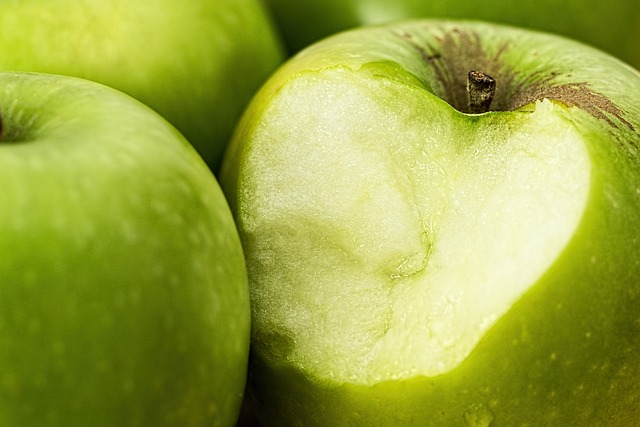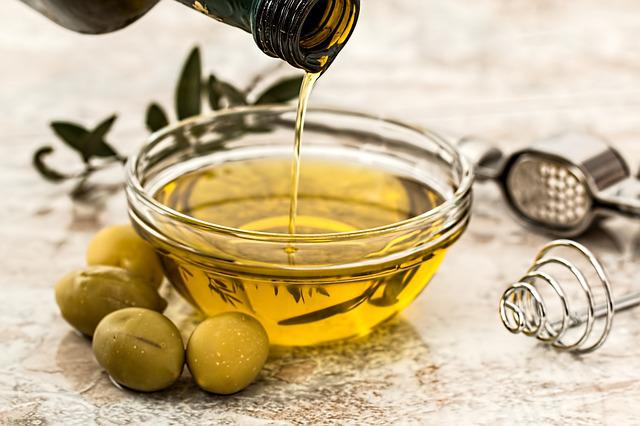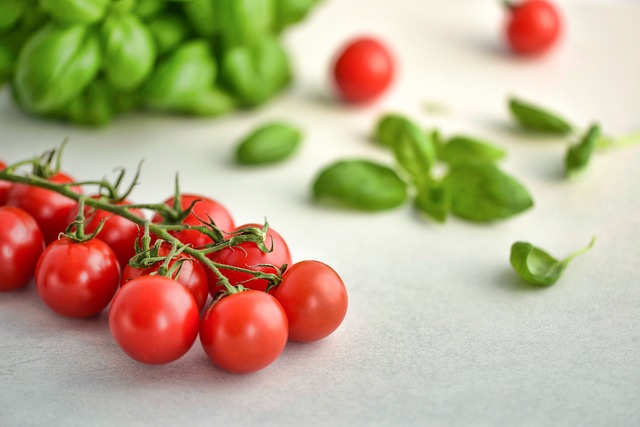Consuming a diverse range of “superfood” is the greatest method to maintain good health.
If you ask five nutrition experts to submit a list of their favorite “superfoods,” you’ll get a variety of answers—but they’ll also overlap. The reason for this is that each food gives something unique and beneficial to your health.
One of the foods on the list may be high in protein or fiber but low in vitamins and minerals. Another superfood could be high in disease-fighting antioxidants but low in protein.
If you eat the following items every day, you’ll be able to tick almost all of the nutritional boxes.
Apple a day keeps the doctor away.
Apples are a fiber-rich fruit and contain a variety of vitamins and minerals, including increased levels of vitamin C, B-6, and potassium. The vibrant redskins are high in quercetin, a phytochemical with anti-inflammatory benefits. Apple consumption lowers the risk of cardiovascular disease, asthma, and Alzheimer’s disease.
According to research, “one apple a day keeps the doctor away.”
Apples are high in the antioxidants quercetin and catechin, which help protect our cells and lower our risk of cancer and heart disease.
Nota bene: Eating the skin provides additional fiber and minerals.
The apple and its skin contain more fiber than many other fruits, which can aid in weight loss by increasing satiety. In addition to the numerous antioxidant health benefits, this “superfood” taste great, are satisfying, and give energy.

Artichokes
Vitamin C, magnesium, manganese, potassium, and niacin are all abundant in artichokes. They also have a high fiber content and a low-calorie count. Artichokes also contain polyphenols, which may act as antioxidants to protect your body’s cells from free radical damage. Artichoke extract may also help cure excessive cholesterol levels, although further research is needed to confirm this.
Bananas
I believe bananas are the most commonly utilized item in fruit smoothies, which makes sense given their sweetness and nutritional value. Bananas are abundant in potassium, a micronutrient that is essential for balancing sodium levels in the body. They also have antioxidants and chemicals that are related to dopamine, a neurotransmitter.
Cabbage
This leafy green vegetable is high in vitamin K, which is required for good blood coagulation, as well as calcium, vitamin C, vitamin A, vitamin E, and B vitamins. Cabbage also contains chemicals that may be beneficial to your health, such as chlorogenic acid and caffeic acid.
Cabbage is also extremely low in calories.
Carrots
Eating carrots is a great method to receive beta-carotene antioxidants, which your body requires for normal vision and cell differentiation. Carrots are also high in fiber and low in calories. They also include antioxidants like polyacetylenes, beta-carotene, and lutein, which may have health advantages.
Celery
Celery is high in calcium, magnesium, and potassium, making it beneficial to the health of your bones, muscles, and nerves. Celery is also high in fiber, low in calories, and high in vitamins A and K. It’s ideal for weight loss or a healthy diet. Celery also includes flavonoids with anti-inflammatory effects, such as luteolin and apigenin.
Onions
Because it includes flavonoids and sulfur-containing chemicals, eating this tasty vegetable as a side dish may help reduce inflammation. Using onions as a seasoning may be a smart strategy to reduce your sodium intake by lowering the quantity of salt you require. Nevertheless, make sure you use fresh or dried onions — onion salt and other onion-containing flavor blends can be high in sodium.
Oranges
Oranges are typically taken in the form of orange juice, which is typically consumed with breakfast. They are well-known for their vitamin C content, but they are also high in potassium, folate, and fiber. It’s recommended to consume the whole orange rather than just the juice to get the fiber that’s generally lost when it’s transformed into juice. Nevertheless, 100% orange juice with no added sugar is an excellent anti-inflammatory beverage.
Strawberries
Strawberry juice is high in vitamin C, which your body requires for appropriate immune system function and strong connective tissue, as well as folate, a B vitamin. They also include a variety of useful substances like ellagic acid, anthocyanins, quercetin, and catechins, which have anti-inflammatory properties.
Tomatoes
Tomatoes contain vitamins A, and C. Tomatoes also produce chemicals known as lycopene and -tomatine, which have been linked to potential health benefits. Tomatoes, like strawberries, may have potent anti-inflammatory qualities.
Blueberries Are High in Antioxidants
Blueberries contained more antioxidants than nearly 40 of their competitors in a study of popular fruits and vegetables. This puts the humble berry at the top of the list when it comes to preventing cancer, heart disease, dementia, and macular degeneration.
The antioxidant epicatechins in blueberries help protect against urinary tract infections.
Epicatechins help to keep bacteria from adhering to the bladder wall. Blueberries are also abundant in water, which hydrates the skin and bodily cells.
Consuming half a cup of blueberries satisfies one fruit serving per day.
Oats for Fiber Consumption
Oats are abundant in soluble fiber and have been linked to decrease blood pressure and cholesterol levels. Oatmeal is a healthy carbohydrate that is high in beta-glucan. Beta-glucan is a strong soluble fiber that aids in the slow digestion of sugar and the regulation of blood sugar levels.
Oats are also high in plant protein, which aids in muscle growth and repair.
Each half-cup portion has a whopping 10 grams of fiber, and numerous studies have shown that eating oatmeal may lower the risk of heart disease. A bowl of oats will jumpstart your day and your body, and it’s also a terrific pre-or post-workout meal.
Green Tea Boosts Metabolism
Green tea is an antioxidant powerhouse. Its antioxidant levels have been shown to be higher than those found in fruits and vegetables.
Green tea is high in catechin, an antioxidant that has been demonstrated to help prevent cell damage in the body.
Catechin has been shown to lower inflammation in the body, which is linked to disease and illness. This potent antioxidant has been demonstrated to lower the risk of heart disease and blood pressure.
Green tea has also been shown to aid in the prevention of plaque development, which is connected to Alzheimer’s disease. Increased metabolism for weight loss is another health benefit. Drinking high tea has just been more enjoyable—just remember to keep it green.
Flaxseeds, and ground, help to reduce inflammation.
Flaxseeds are high in alpha-linolenic acid and are a rich source of fiber. The important fatty acid alpha-linolenic acid has been demonstrated to lessen inflammation in the body.
Lignans, a type of plant chemical known as polyphenols, are also found in flaxseeds. These precursors help to minimize the incidence of some hormone-related malignancies.
Further anti-inflammatory qualities of flax seeds have been shown in studies to be beneficial for acne and asthma disorders. Ground flax is a high-fiber food that can aid with digestive issues. Flaxseed is high in nutrients and a fantastic source of healthful fat. Flax is a remarkable “superfood” that is high in minerals, fatty acids, and protein.
Yogurt boosts gut bacteria
Yogurt is well-known for containing probiotics or living beneficial microorganisms. Yogurt has been demonstrated to inhibit the growth of potentially dangerous bacteria in the digestive tract. It also aids in the maintenance of steady ph levels in the body and can boost the immune system. Probiotics may aid with vaginal yeast infections, inflammatory bowel disease, ulcers, and urinary tract infections, according to some studies.
Probiotics are only suggested for persons with ulcerative colitis or irritable bowel syndrome in the context of a clinical study, according to clinical practice recommendations released by the American Gastroenterological Society in 2020.
Yogurt is also high in calcium and protein, which help develop bones. Not all yogurts are the same. To guarantee that it contains probiotics, look for the phrase “live and active cultures” on the label. It is also advised to take plain types rather than sugared varieties.
The Antioxidant King Is Broccoli
Broccoli, a cruciferous vegetable, is one of the most potent antioxidants superfood in our diet. Broccoli is high on the list of superfoods because it protects our bodies against cancer.
Broccoli has a great nutritious value while being low in calories. It has the highest nutritional density of all of these vegetable “superfoods.”
According to research, broccoli is the king of cancer prevention. According to research, sulfur compounds in broccoli signal our genes to increase the synthesis of detoxification enzymes. These enzymes have the ability to target cancer-causing chemicals.
Broccoli also provides elements that promote immunological and cardiovascular health, bone development, and the prevention of birth abnormalities.
Olive Oil and Cardiovascular Health
Olive oil is a nutritious dietary fat that has been demonstrated to lower the risk of heart disease. Monounsaturated fatty acids are the major fat present in olive oil (MUFAs). MUFAs have been demonstrated to reduce total cholesterol and aid in blood clotting stability.
Olive oil has been related to improved blood sugar control and decreased insulin levels. Those suffering from type 2 diabetes have benefited greatly from research.
Olive oil is also high in antioxidants known as phenols, which have been related to the prevention of cholesterol buildup in arterial walls. For the best nutritional value, look for “virgin,” “extra-virgin,” or “cold-pressed” olive oils.
To gain heart-healthy advantages of this “superfood”, take one tablespoon every day.

Beans Are Good for Your Brain
Beans are a prime source of soluble fiber and a suitable carbohydrate to take on a daily basis. Soluble fiber benefits the heart by absorbing cholesterol before it can cling to the arterial wall. Normal bodily mechanisms then remove the cholesterol. According to research, consuming a high-fiber diet can reduce total cholesterol by 10% to 15% and is connected to a lower risk of heart disease.
Anthocyanins, antioxidant molecules found in black beans, have been demonstrated to benefit brain function.
This superfood have the highest plant protein ranking but must be coupled with a grain like brown rice to get a “complete” protein.
Cinnamon Is a Healing Spice
Cinnamon has been related in studies to lower blood sugar levels in diabetics. It’s also high in manganese, iron, calcium, and fiber, all of which are helpful to the body.
Cinnamon has been shown to have antibacterial, anti-parasitic, and antifungal effects.
The health advantages of this extraordinary spice are still being studied, but it has long been utilized in traditional medicine.
To Conclude
Nutrition, like fashion and home décor, has food fads – one year, everyone is eating quinoa and chewing on kale. Then gluten-free meals and chia seeds became popular. Following these trends can be both confusing and costly.
Superfoods do not have to be pricey; exotic foods are found exclusively at the most trendy health food stores. There are plenty of unfashionable, nutrient-dense foods on the shelves of any shop.

